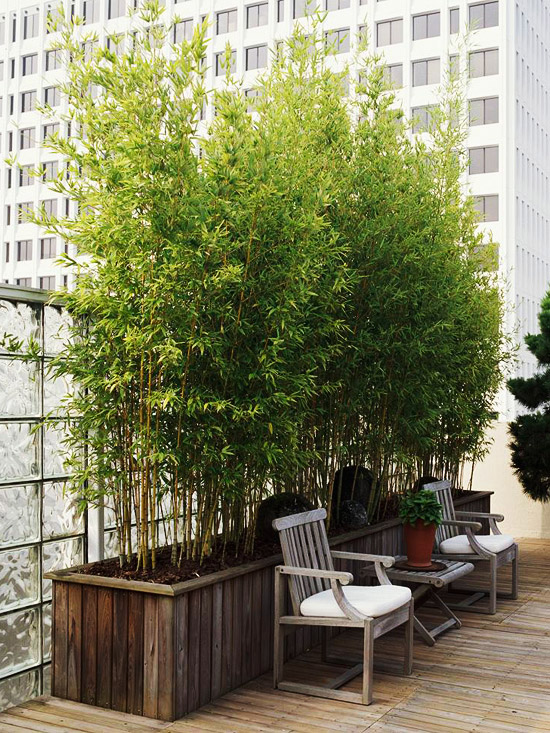






It's easy to fall for lucky bamboo -- the plant is easy to grow, has a distinct look, and comes in a wealth of varieties. But you need to choose carefully; many varieties have extremely aggressive growth habits. Depending on how you want to use bamboo plants, you may want to choose a clumping, nonspreading type.
What Is Bamboo?
Bamboo is a generic term for a large number of different plants, much like grass or vegetable. Bamboo varieties are typically perennial evergreen woody-stem grasses that are among the fastest-growing plants in the world.
Although bamboo is best known in Asia, there are three species native to North America, and more than 100 other types can grow in the United States. Bamboos come in a wide array of sizes and growth habits, from low-growing groundcovers to huge treelike plants.
Learn even more about bamboo.
Another great warm weather plant: Palm trees. Learn how to grow them.
Bamboos can be generally separated into two types: running and clumping.
The running types need large areas to roam and should be controlled with annual root pruning. Otherwise they'll take over and crowd out other plants around them.
Clumping types form tight clusters of shoots, growing outward from a central root ball at a much slower pace, 2 to 12 inches per year.
The sun requirements for bamboos vary according to type, but all need regular watering to thrive. Don't let them stand in water, however.
Keeping in mind that bamboo plants are members of the grass family, a lawn type of fertilizer with extra nitrogen may be used. When looking at the number on the package, the first number should be the highest, such as 21-5-6. Use an organic fertilizer if possible.
Learn more about how to grow bamboo.
Some of the most commonly known running bamboos are Phyllostachys bamboos. These are the classic bamboos that can reach up to 70 feet tall and have stems as large as 6 inches wide. They are strong, fast-growing, spreading plants with varying degrees of hardiness in Zones 5-10.
Phyllostachys bamboos come in a wide variety of colors, including yellows, greens, dark reds, and blacks (the famous black bamboo). They work well for landscape privacy screening and create the sense of being in a forest.
Because they spread rapidly with underground rhizomes, Phyllostachys bamboo plants need regular maintenance to keep the runners in control. A barrier may be installed to help contain the spread. Phyllostachys bamboos grow best with at least six hours of direct sunlight; yearly maintenance includes root pruning, removing any dead or unattractive stems, and shaping it for best appearance.
There are several types of clumping bamboos, including Bambusa, which thrives in hot, southern climates, and Chusquea, Borinda, and Himalayacalamus for cool, mild climates. Fargesia bamboos are the most cold-hardy clumping bamboos, surviving as far north as Zone 5.
Clumping types, which typically prefer shade or partial shade, come in a wide range of colors and sizes. They can be pruned to the shape you wish without hurting the plant. If the clump grows too wide, simply thin or remove outer canes by pruning at ground level. Dwarf or groundcover types can be cut back to the ground each spring to keep them looking their best. The new growth will be thicker and shorter.
Learn how clumping bamboo can help create privacy.
Bamboo can be grown in containers, but the tall, spreading types must be repotted or divided every few years so they don't burst and break their containers. Like other potted plants, container bamboos need good drainage, regular watering and fertilizing, and protection from winter weather.
The cute green houseplant marketed and sold as "lucky bamboo" isn't a bamboo at all. It is Dracaena sanderiana, a member of the lily family.
Nandina, an evergreen shrub known as heavenly bamboo or sacred bamboo, is a member of the barberry family. Often grown as a low-maintenance shrub in milder areas of the country, heavenly bamboo is considered invasive in some areas, so check local restrictions before planting it.
Learn how bamboo plants play a role in Japanese gardens.
Copyright © www.100flowers.win Botanic Garden All Rights Reserved